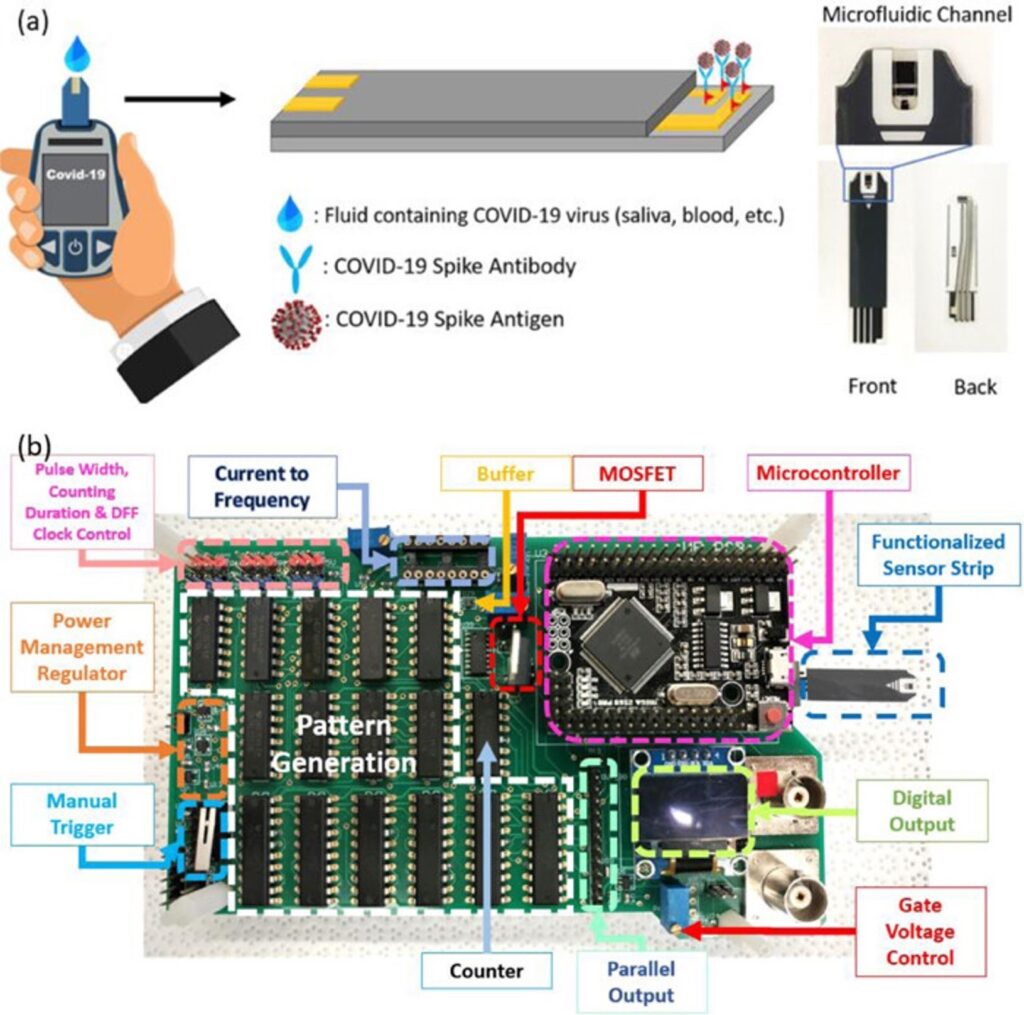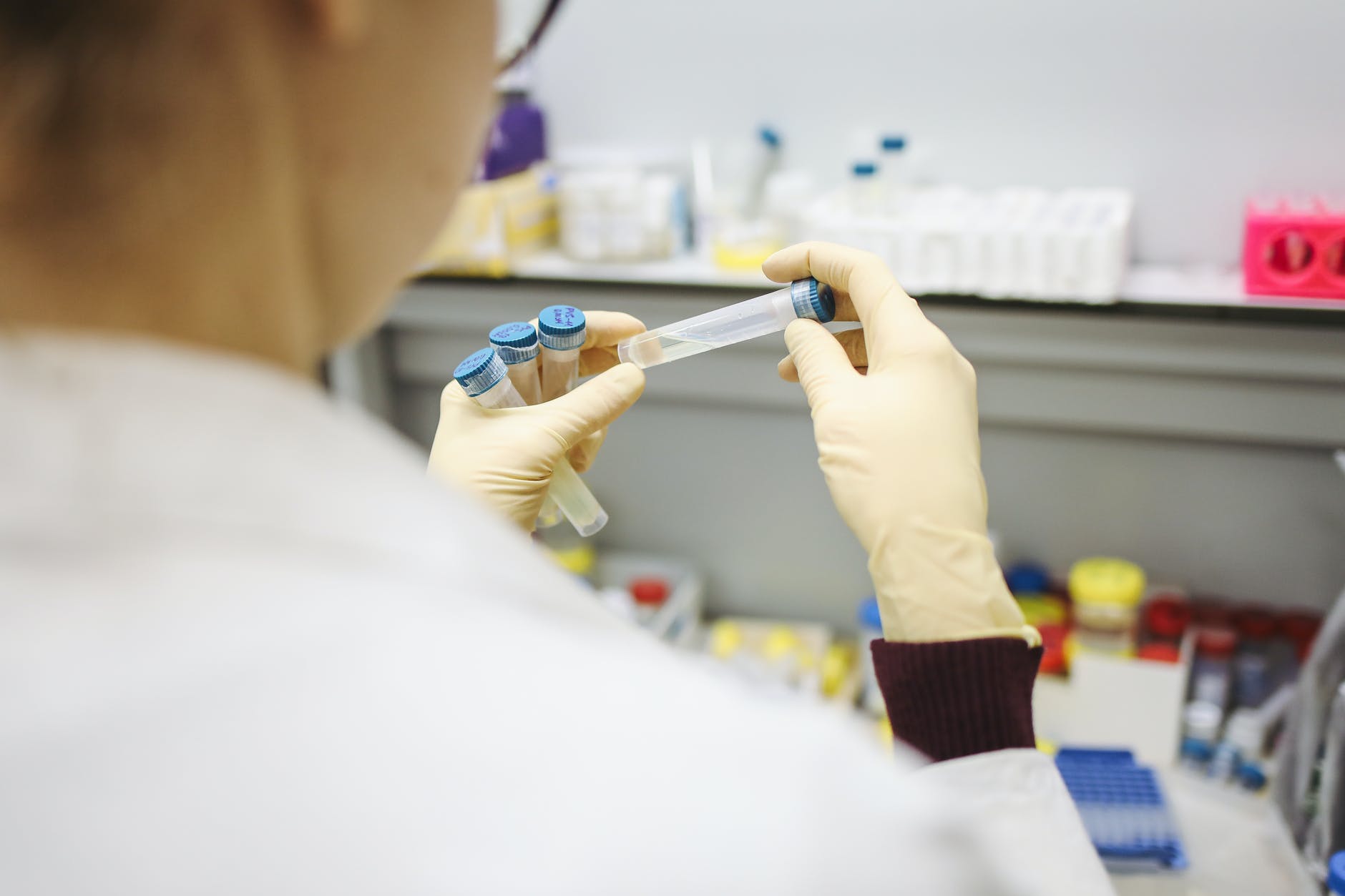Researchers from the University of Florida, along with collaborators from the National Chiao Tung University, recently created the world’s fastest COVID detection test to date using a new method with antibody-infused test strips and a small circuit board.
Since the beginning of the COVID-19 pandemic, RT-PCR tests, commonly referred to as PCR, have been regarded as the gold standard for COVID-19 testing.
Reverse Transcription Polymerase Chain Reaction (RT-PCR) works by first converting RNA into DNA, followed by copying small segments of this DNA over and over, primarily using temperature to denature and bind DNA, along with “primers” to make new copies. The process takes about two hours and uses expensive machinery. Such amplification of DNA makes it easy for machines to detect the small amounts of viral particles present in infected patient samples, but difficult to apply to large populations during a pandemic.

One of the defining features of the coronavirus is the spike proteins, which enable the virus to penetrate host cells due to their geometry and location. Rather than having to convert RNA to DNA, copy the DNA, and read a signal as is done with RT-PCR tests, a new study described a system which uses the spike protein-antibody bond and circuitry for detection.
Antibodies are Y-shaped proteins our immune system produces to fight and prevent future infection. They work by creating sites to which infectious particles bind, effectively blocking those particles from infecting cells. These sites can include binding locations for viruses such as SARS-CoV-2, which researchers have found to be quite useful for detection.

As our need for fast, cheap, and portable detection grows, researchers have been searching for new methods. The researchers from the University of Florida ingeniously combined knowledge of antibodies and circuitry to detect presence of COVID in one second.
First, they modeled commercially available glucose testing strips commonly used for testing blood sugar levels in diabetic patients. If you were to dissect a glucose test strip, you would find several electrodes, coated and made of different materials.
Most commonly, glucose test strips are coated with an enzyme that reacts with glucose to steal its available electrons. These electrons are then transported to the electrode which can detect and quantify their presence, indicating how much glucose was in the blood sample.

In the study, researchers worked to transform the electrodes using different biological and chemical materials. One of the electrodes was plated with gold then “biofunctionalized” with coronavirus antibodies. An electrode in the middle was connected to an electronic component called a metal-oxide-semiconductor field-effect transistor (MOSFET), which is used to control and amplify electrical signals.
When spike proteins from a sample interact with the surface, the antibody-antigen complex will spring up and down, causing an electrical signal to be sent to the gate of the MOSFET. The device’s circuit board can then quickly convert and read the signal.
The MOSFET is especially important as it can convert electrical activity from the interaction of a very small amount of coronavirus with the antibodies into a very large signal, similar to how RT-PCR tests amplify the small amount of genetic material into a much larger and easier-to-detect sample.

The accuracy and acute sensitivity of this method are a direct result of combining electrical and biological tools of detection. Not only does this allow for the detection of extremely low quantities of virus particles, but it can be accomplished in merely 1 second. Furthermore, the device is inexpensive and portable, paving the way for fast, economical, and highly sensitive at-home diagnostic kits.
Notably, Minghan Xian, first author of the study, remarked that by simply altering the type of antibody used, this detection kit could be reapplied to a multitude of other infectious diseases. The electronic components can also be reused with new electrodes.
References
- Feldman, B. (2009, October). Electrochemical blood glucose test strips for people with diabetes. The Electrochemical Society Electrochemistry Encyclopedia. https://knowledge.electrochem.org/encycl/art-g01-glucose.htm
- University of Florida Department of Chemical Engineering. (2021, June 1). COVID-19 testing method gives results within 1 second. https://www.che.ufl.edu/covid-19-testing-method-gives-results-within-1-second
- Xian, M., et al. (2021, May 18). Fast SARS-Cov-2 virus detection using disposable Cartridge strips and a semiconductor-based biosensor platform. Journal of Vacuum Science & Technology B. https://doi.org/10.1116/6.0001060
Grace is a Biomedical Engineering PhD candidate at Johns Hopkins University. Her main areas of interest include antimicrobial resistance and CRISPR Cas systems. She seeks to convey as much accurate and understandable scientific knowledge to the public as possible.
